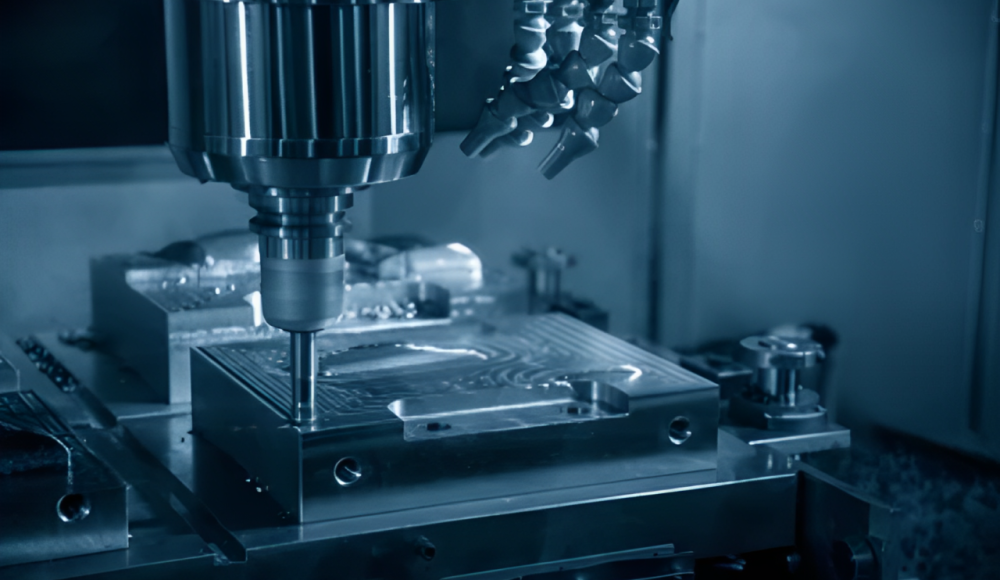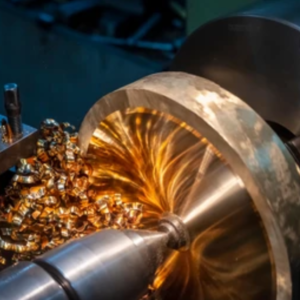If we specifically talk about manufacturing of workpieces. Both CNC machining and injection molding are considered essential manufacturing processes. These both are widely used in multiple industries. Besides this, these have their unique features and they offer different but prominent advantages. They can deal with various metals and can give high production volumes. So, in this article, we will discuss the major aspects of CNC machining vs injection molding. We will also provide insights on their material suitability and applications in diverse markets.
What is CNC Machining?
It is a computer-controlled manufacturing process that first uses pre-programmed computer software. Then these programs are decoded by machines. Then they start moving and rotating according to the commands. So, this technique is capable of controlling a range of complex machinery. They may include grinders, routers, mills, or lathes. So, these are high-precision automatic methods. They can perform 3D-cutting tasks in just a single set of prompts.
Brief Overview of the CNC Machining Process
Let’s have a brief overview of the CNC Machining process. It starts with designing the 3D model of workpieces. It is generally done using CAD software. Then the design is subjected to another software, named CAM. So, it starts to decode the design and then direct the machine movements accordingly. Just after the programming, the workpiece is placed on the CNC machine table. Then the cutting tools are adjusted. So, this whole setup decides the performance and efficiency of workpieces.
So, the next step is machining. Here the CNC machine cutters perform cutting. The material cuts into the required shape. After attaining the shape, the workpiece needs proper finishing. So, it undergoes several processes, i.e. sanding, polishing, or coating. They all help achieve the required surface finish.
What is the Injection Molding?
Injection molding does not cut the workpiece using cutting tools. Instead of this, it uses a mold and facility to carry out its whole operation to make the metal part. Here the metal is first melted down and then injected into the mold. It takes the shape of the mold and then ejects out on solidification of molten metal. It has common applications in making plastic products, metal, glass, and other materials.
Brief Overview of the Injection Molding Process
Let’s start from the beginning. In injection molding, the engineers first design the mold with high precision. Here they specify the dimensions and shapes of the metal part they need. The next step is a material selection where the engineers and client decide what material they require for the metal part production. Just after that, the selected material starts to melt down and inject into the mold. Then it cools down using coolants and ejects out of the mold. The material attains the shape of the die. Then, the engineers conduct a thorough inspection and perform additional steps, i.e. trimming painting, assembly, etc.
Difference Between CNC vs Injection Molding
So, here is a brief table that will help us understand the difference between CNC and Injection molding.
| Feature | CNC Machining | Injection Molding |
| Process | Subtractive manufacturing process where material is removed from a solid block to create the part | Additive manufacturing process where molten material is injected into a mold to form the part |
| Material Usage | Typically results in more material waste due to the subtractive nature of the process | Less material waste since the process is additive, with excess material often being recyclable |
| Initial Setup Cost | Lower initial setup cost, especially for small production runs or prototyping | Higher initial setup cost due to mold creation, making it more cost-effective for high-volume production |
| Production Speed | Slower for high volumes, but quick for prototyping and small batches | Faster for high-volume production once the mold is created |
| Precision and Tolerances | High precision and tight tolerances achievable, suitable for detailed and complex parts | High precision and tight tolerances achievable, especially for the mass production of detailed parts |
| Flexibility and Customization | High flexibility for custom and one-off parts; easy to make design changes | Less flexibility once the mold is made; design changes require new molds |
| Material Variety | Can work with a wide range of materials, including metals, plastics, and composites | Primarily used for plastics, but can also be used with some metals and ceramics |
| Surface Finish | Excellent surface finish achievable with secondary finishing processes | A good surface finish is achievable directly from the mold but may require secondary finishing for the best results |
| Tooling and Equipment | Requires CNC machines, which can be used for different parts without changing hardware | Requires custom molds for each part design, which are specific to the part being produced |
| Batch Size Suitability | Ideal for low to medium-volume production, prototyping, and custom parts | Ideal for high-volume production due to the cost and time associated with mold creation |
| Lead Time | Shorter lead time for prototyping and small batches; longer for complex parts | Longer lead time for initial mold creation; shorter for subsequent production runs |
When to Choose CNC Machining?
Here are some short points that help you understand when to choose CNC machining.
- Low to medium production volumes: CNC machining is cost-effective for smaller batches.
- High precision and tight tolerances: Ideal for parts requiring high accuracy.
- Complex geometries: Suitable for intricate designs and custom parts.
- Material versatility: Works with a wide range of materials including metals.
When to Choose Injection Molding?
Similarly, Here are the key aspects that help you understand when to choose Injection Mold molding.
- High production volumes: Economical for mass production.
- Consistent part quality: Ensures uniformity in high quantities.
- Lower per-part cost: After initial setup, the cost per part is significantly reduced.
- Plastic parts: Specifically used for plastic component manufacturing.
Similarities between CNC Machining and Injection Molding
Although, these both processes have their functions. But they both have some commonalities. Let’s discuss them here.
- Precision Manufacturing: Both processes are capable of producing highly precise components.
- CAD Design:Utilize computer-aided design (CAD) software for part design.
- Automation: Both can be automated to various degrees for efficiency and repeatability.
- Post-Processing:Ofterequiresre secondary operations to achieve desired surface finishes and tolerances.
Why Rely on TOPS for both CNC Machining and Injection Molding
TOPS has years of experience in both CNC machining and injection molding. So, we have produced millions of parts using both techniques. Our expert team is here to serve you with the best services along with quality work, So, our commitment to delivering high-quality parts is our best selling point. Besides all these, we have advanced technology for both CNC machining and injection molding. Our engineers provide precise designs and final products that comply with high standards of manufacturing.
So, if you are looking for CNC machining and Injection Molding services. Don’t go anywhere. We are here to serve you with both high quality and precision. Get your Quote today.
Conclusion
In conclusion, CNC machining vs injection molding, both process have their unique advantages. They have different functions as well. So, selecting between these processes depends on the need you have. So, if we get a better understanding of the differences between these processes. They’ll guide us on what materials and processes are suitable for our project. It will eventually result in high-precision, flexible, and cost-effective mass production.
Frequently Asked Questions
Q1. What is the Major Difference Between CNC Machining vs. Injection Molding?
CNC machining is a subtractive process. Because it helps remove material to make parts. On the other hand, injection molding is an additive process. It helps make parts by injecting material into molds.
Q2. CNC Machining or Injection Molding, which is More Cost-effective for Low-volume Production?
CNC machining is relatively more cost-effective for low to medium-volume production. Because it needs lower setup costs.
Q3. Is CNC Machining Applicable to Plastics?
Absolutely Yes, CNC machining can work with a variety of materials, i.e. plastics, polymers, or metals.








2 thoughts on “CNC Machining vs Injection Molding: A Brief Comparison”